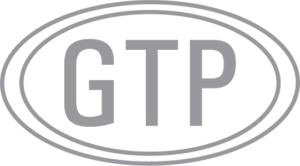Meeting the specification is not simple!
We would like to thank Velcon Filters for their help with this GamGram.
The EI-1581 specification is currently in its 5th edition. This used to be an API document, but is now under the EI, the London-based Energy Institute. It is recognized around the world as the #1 document for the design, testing and performance of Filter Separator vessels and the filter coalescer elements/cartridges/separators that go into them.
There are two important elements of this specification for you to comply with:
- Your filter separators have the correct elements for the vessel type, fuel and configuration at the flow rate at which you operate them.
- You have the correct accessories in proper working condition on your filter separators.
In this GamGram, we will address the first element, determining that you have the correct elements in the correct vessel for the conditions and flow rate of your facility.
Our descriptions below are not to be considered the rule. For example, in a hydrant system where water is, or can be, present on occasion in significant quantities, Type S-LW filter separators are not the correct choice. Throughput and flow rate are other factors. A small corporate fueling cabinet will see less throughput than an airline fueling facility.
Categories
There are different “Categories” in this specification. Determining which one you fit into is your first task.
| Category C | For commercial Jet Fuel (Jet A or Jet A-1) with or without certain additives such as conductivity improver (SDA) and CI/LI (DCI4A, corrosion inhibitor/lubricity improver). |
| Category M | For Military Jet Fuel (JP-4, JP-5, JP-8, JP-5/8 ST, NATO F-34, NATO F35) that contains the basic military additives, including Anti-Icing Additive (FSII, DiEGME or “Prist”), SDA and Corrosion Inhibitor, but NOT “+100” thermal stability improver additive. |
| Category M100 | For Military Jet Fuel that contains “+100” type of additive, meant to improve the thermal stability of the fuel in the aircraft. This fuel may also contain the additives in category “M”, above.
NOTE: Element and vessel sets meeting category M100 are not better or equal to category “M”. Be sure that if your filter vessel and elements are correct for the specific application, fuel and additives for your system. |
Types
Your second task is to determine which type in the specification is correct for you.
| Type S | For locations such as fuel terminals or airport fuel depots. In such locations, significant amounts of dirt and water may be present. This is similar to the old “Class A” and “B” specification; this test is run at 3% water.
NOTE: Type S qualified systems are automatically qualified for type S-LD and S-LW so operating a vessel qualified to type S covers for all eventualities. But a type S vessel will often be larger and more expensive than a S-LW vessel. |
| Type S-LW | For locations are on refueler trucks or hydrant carts, where minimal amounts of water are expected. This is similar to the old “Class C” specification; this test is run at ½% water, not the standard 3%. |
IMPORTANT: If you are fitting elements into existing vessels, it is NOT as simple as getting the correct elements. There is an important change in the specification that may make your present filter separator vessel non-compliant. If your filter separator is a vertical vessel and it has a flat deck plate (inside the vessel looking down, a plate that is perfectly horizontal and is welded all the way around the inside of the vessel to the vessel shell, with or without a “sump”) that deck plate must be sloped towards the drain to remove all water. You cannot meet the specification using this vessel or get around this specification improvement by tilting your vessel.
Conclusions
Choosing the correct vessel and then putting the correct elements in it is more complicated than ever before. Simply fitting 5th qualified cartridges does not mean that you are operating the vessel to 5th edition requirements. You need to have your company’s help in doing this right. Follow the chain of responsibility. Additionally your trusted aviation fuel filter manufacturer, or the official distributor, would be a good source of advice.
When ordering new elements for an existing vessel, provide your filter supplier with the following information: (You can also request a form from your supplier which makes this easier, and records everything in one place, right down to the gasket number).
- Vessel Model Number and brand.
- The maximum actual flow rate the vessel sees in service as well as the flow rate on the name plate.
- The part number and quantity of elements you presently have in the vessel.
- EI Category and Type — If unsure, describe your system, the position of the filter in the system and dirt/water experience.
- Customer types to whom you provide fuel (general aviation, airline or military)
- Fuel type – in addition to selecting Category and Type above.
Be sure that you get a Similarity Data Sheet showing the qualification of those elements in that vessel to the Category and Type you requested. Not only is a similarity data sheet required for every single vessel but a non-ferrous engraved nameplate detailing the vessel model, installed element models and qualified flow rate must be affixed to the vessel. Changing from one brand to another means changing the nameplate in order to be compliant. Self-adhesive labels do not meet the requirements of the specification.
When buying a new vessel, provide the following information:
- The maximum actual flow rate the vessel will see in service.
- Maximum operating pressure of the system.
- EI Category and Type – If unsure, describe your system and dirt/water location i.e. fuel depot receipt or loading or a truck mounted into-plane application.
- Vertical or horizontal design preference (Both have advantages and disadvantages).

